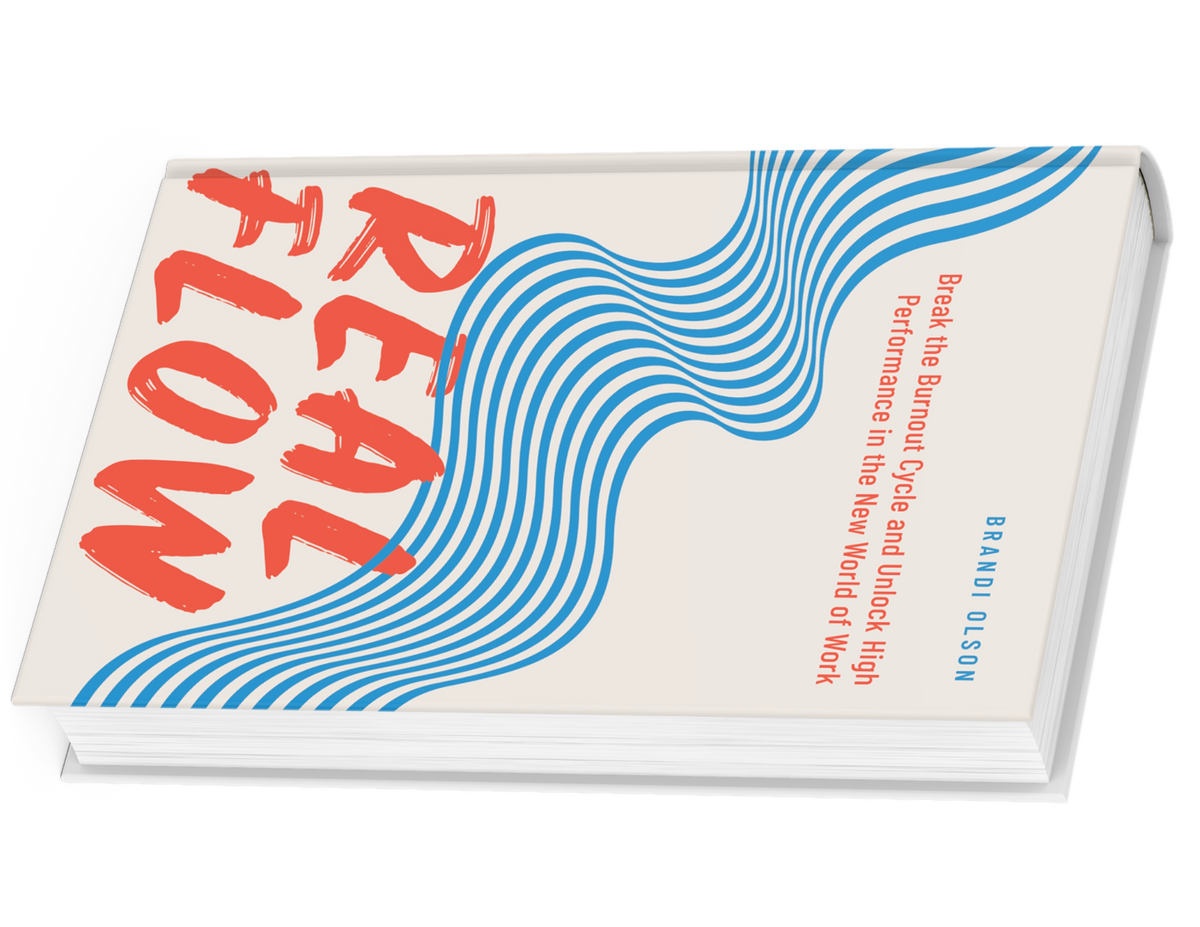Book review: The 3 things only leaders can do
Although its stated ambitions are more modest, Real Flow amounts to a quiet manifesto for a new model of work — one that begins by putting human wellbeing first, not only as an ethical principle but as a simple fact about how organizations operate.

If I could somehow require every leader in every organization to read just one book, it would be Brandi Olson’s Real Flow. It’s that good, and that important.
Three simple principles for leaders
Over the course of my career as a consultant, I’ve read quite a few books about how leaders can make organizations work better. Most I forgot instantly; a few have suggested little bits of wisdom that I still pass along to my clients. But Real Flow is the only book I’ve ever encountered that tells leaders exactly what they need to do to help the people they’re managing do better work, more happily, in ways they can sustain over time. That practical advice is startlingly crisp and clear. “Stopping the flood and starting to flow begins with three practices,” Olson writes: “Make your work visible. Limit your work in progress. Prioritize.” Making work visible, limiting works in progress, and prioritizing — those, Olson says, are the three indispensable things leaders, and only leaders, must do. It’s as simple as that — and as difficult.
Brandi Olson is a friend of mine, and I’ve been fortunate to hear her talk about these principles for years. I didn’t know if they’d survive the transition from speech to writing — but wow, did they ever. With the encouraging warmth of a wise mentor and the unsparing clarity of a good consultant, Real Flow offers a compelling argument for the necessity of these three leadership practices, and provides refreshingly realistic advice about putting each of them into practice in the messy reality of actually existing organizations. “It’s easier to solve problems in reality rather than in hopes and dreams,” Olson writes, and her commitment to reality is steadfast. Every chapter reckons compassionately and practically with the honest difficulty — and the exponential rewards — of leading actual people in the actual world.
Throughout, real-world examples from Olson’s consulting career illustrate how each leadership principle works in vivid detail — and offer cautionary anecdotes about what happens in organizations where leaders ignore them. (“The details and names in the stories that follow,” she writes at one point, “have been changed to protect the misguided.”) Even more helpful, for me, are the luminous metaphors Olson uses to bring the conceptual work of her book to life. Two images in particular give the book its title and the book its conceptual scheme: work as water to be carried across a room, leaders as the captains of boats on a raging river. Across nine brief and lucid chapters, Olson deftly elaborates each of those metaphors to illustrate how and why our current ways of working tend to produce bad results and human misery — and to show exactly how and why making work visible, limiting works in progress, and prioritizing are essential leadership practices.
A quiet manifesto for a new way of working
Although its stated ambitions are more modest, Real Flow amounts to a quiet manifesto for a new model of work — one that begins by putting human wellbeing first, not only as an ethical principle but as a simple fact about how organizations operate. “Happy, healthy people are not a pleasant side effect of a high-performing organization,” Olson insists; “happy, healthy people are the only path to sustainable high performance.” The rest of this remarkable book about leadership follows from that simple premise.
Olson’s abiding commitment to happiness is one reason why Real Flow will find a far wider audience than corporate executives alone. It will be life-changing for anybody who’s in the position of organizing other people to do work — nonprofit executives, academic administrators, project managers, union bosses, religious leaders, teachers, community organizers. That’s because Real Flow isn’t really about business at all: it’s about work, all kinds of work, and about how human beings relate to each other to do it. The book does spend time thinking with and about business folks, who are sure to be among its first and most enthusiastic readers. But Olson’s critique of what she calls the “machine paradigm” of modern corporate management — which imagines people as “resources” whose “productivity” can be subdivided into percentages, forecast and measured — is almost universally applicable. As any nonprofit or political leader can tell you, the machine paradigm has colonized practically all thinking about how organizations operate, at least here in the United States.
If you lead people, this is the book you need
That’s the reason, Olson argues, why the world of work is so profoundly, chronically miserable — and why the work we do manage to accomplish together comes at the cost of staggering human suffering: “leaders create situations where people have to make impossible choices. Outcomes diminish and people suffer.” Real Flow is a relentlessly practical, refreshingly honest, and timelessly relevant manual for leaders who are committed to rejecting the false choice between happiness and good work. If you’re in charge of organizing other people to get things done, this is the book you need.



